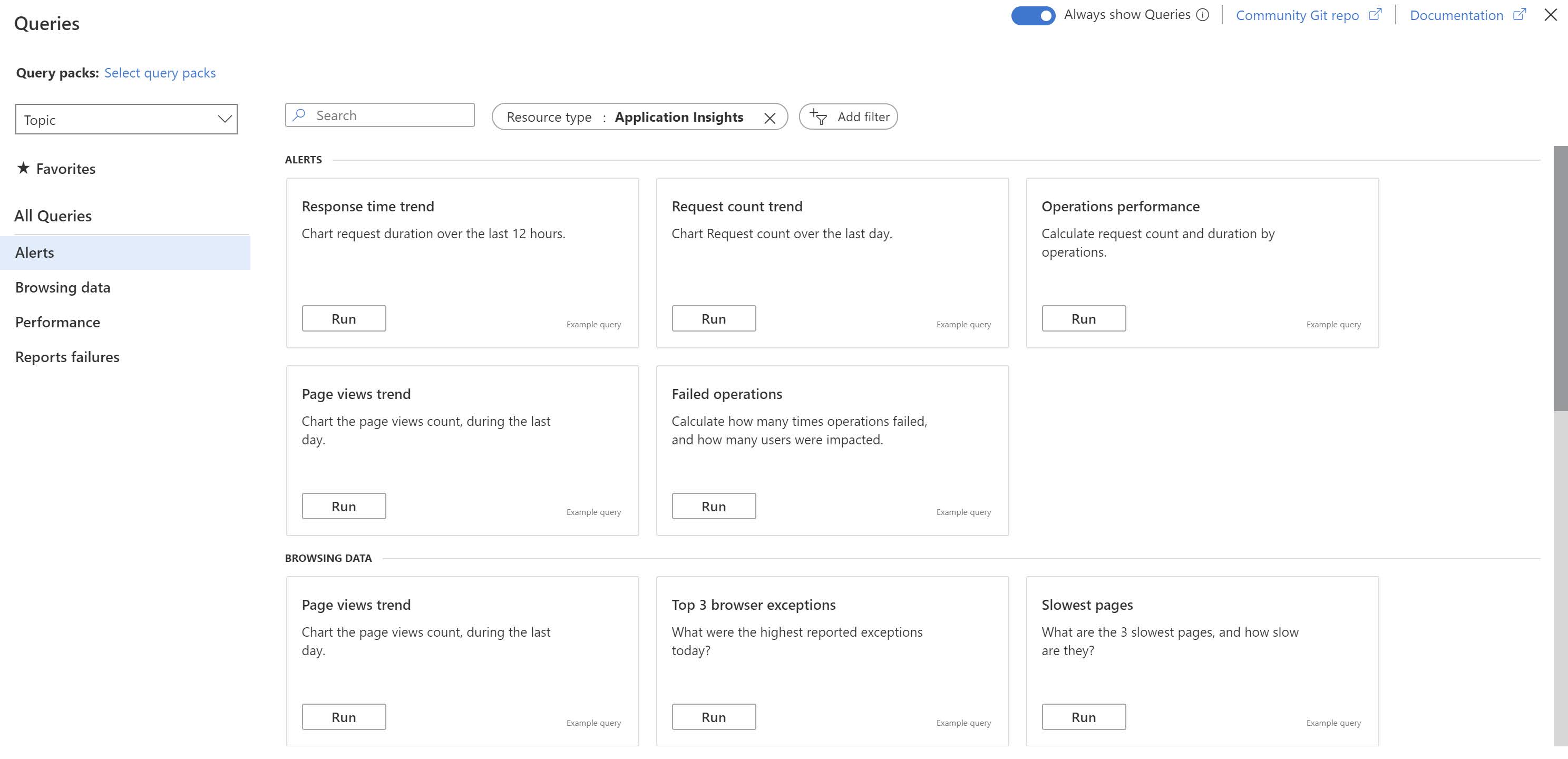By default when you have configured the Application Insights telemetry inside your application, an Application Insights logging provider is registered. This registered provider is configured to automatically capture log events with a severity of LogLevel.Warning or greater(Learn how to change this in one of my previous blog posts).
When you go to the Azure Portal and have a look at the Application Insights resource, you’ll see that by default multiple types of data are captured:
- Requests
- Traces
- Dependencies
- Exceptions
More information about the different types of data can be found in the Application Insights Data Model here.
This is important to know when you want to search for specific log information. The easiest way to do this is through Log Analytics (Go to Monitoring –> Logs).
But when you open Log Analytics, the available example packs are mainly focussed on Requests:
If you want to search for a specific log message, you should use the Traces:
Or if you want to search for a specific exception, you should use the Exceptions:
More information: https://docs.microsoft.com/en-us/azure/azure-monitor/app/ilogger


